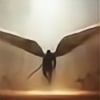HOME | DD
 Urus-28 — Astronomy
Urus-28 — Astronomy
#astronomy #nebula #night #photography #planet #science #sky #space #stars #telescope #tutorial
Published: 2014-10-10 05:00:03 +0000 UTC; Views: 5061; Favourites: 31; Downloads: 0
Redirect to original
Description
body div#devskin11334843 hr { }
Science related Art Week
A Brief History
From the beginning of civilization, the study of the sky has been a constant theme. Some scientists even claim that the prehistoric paintings of the Lascaux Cave are in fact depictions of constellations. True or not, astronomy is definitely one of the oldest sciences, if not the oldest.
For centuries, maps of the sky and the universe were created, most of them with a religious idea in mind.
Aside from the spiritual aspect of astronomy in the Occident, stars are also used for sea navigation. The Arab civilisation is at the origin of many star names and precise measurements of star positions.
Picture via wikipedia : en.wikipedia.org/wiki/Main_Pag…
At the renaissance astronomy was progressively separated from astrology and religion (not without difficulties). The invention of the telescope was critical to some of the most important discoveries of the renaissance.
With the invention of the telescope, the sky became even more impressive, and with the development of science and technology telescopes are becoming larger and larger.
The most famous telescope is probably Hubble. We are all familiar with incredible pictures like the pillar of creation.
Pictures via hubblesite.org/
But do you know where the colours come from, and if they are the real colours of the sky ?
The Hubble Pallette
If you thought that the beautiful colours from Hubble pictures are real, I'm sorry to destroy your dreams, but they are in fact false colours. Astronomers use the light to analyse the composition of stars and nebulae, and extract specific light rays showing the presence of a particular elements. These pictures are called narrowband images. By affecting these narrowband images at specific RGB channels, they can create the colour they want.
Here is an example of a Hydrogen Oxygen Nitrogen false colour picture.
Red = Hydrogen Green = Oxygen Blue = Nitrogen
Resulting HON picture
Pictures via : Almaden Observatory www.almadenobservatory.net/
The choice of colour can be decided by a scientific use : the picture has a visual composition information, but it is also the result of a personal choice and picture beauty. Hubble astronomers are also artists in their job.
If you want to create your own images using this technique, a software is available as a plug-in for photoshop.
hubblesource.stsci.edu/service…
The Night Sky
No need to have the budget of NASA to make pictures of space. A simple camera can create very impressive pictures of our galaxy and an amateur telescope can show nebulae in their full glory.
Tutorials
How to make picture of the milky way ?
Space Art - The Intersection
Space art is somewhere in between science and science fiction. It is often used to illustration science articles. Space art is at present time the only way we have to visit our universe.
Related content
Comments: 13

I get buggy when studying space, time travel, quantum science, molecular science (related to consciousness from only protons, electrons, neutrons etc) that stuff in general...Like, I question reality and such
👍: 0 ⏩: 0

Sometimes I look at space images for hours....so I am not the only one? Makes me feel so small yet wonderful that I am part of such an amazing universe and exist in a time to see it.
👍: 0 ⏩: 1

You are not the only one, don't worry
👍: 0 ⏩: 1

The universe at very small scale is also very cool
👍: 0 ⏩: 0

Wow what an interesting article!
I learnt quite a bit just now!
👍: 0 ⏩: 1

Great ! It was the aim the article
👍: 0 ⏩: 1

Lovely piece 
👍: 0 ⏩: 1

I think you have to be honest with the spectator, if you choose to not follow laws of physics mention it, if you follow them give some reference for the necessary informations, for example the article you want to illustrate.
Once everything is clear an written I think there is no problem
👍: 0 ⏩: 0

A very fun read. People don't realize how much influence society has had by things trillions of miles away, millions of years in the past 

👍: 0 ⏩: 1

Since space art is regularly used in vulgarisation article I think it was necessary to mention it in astronomy
👍: 0 ⏩: 0




